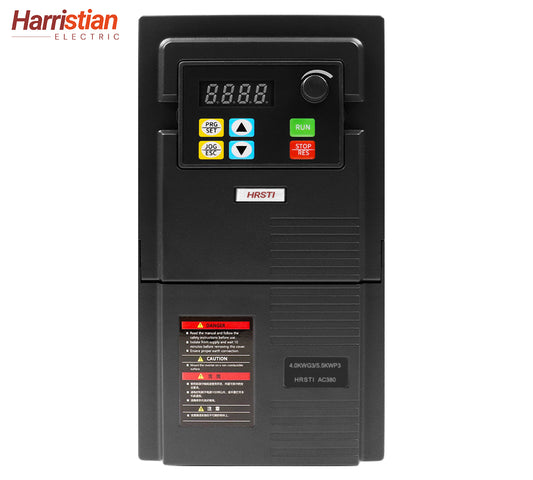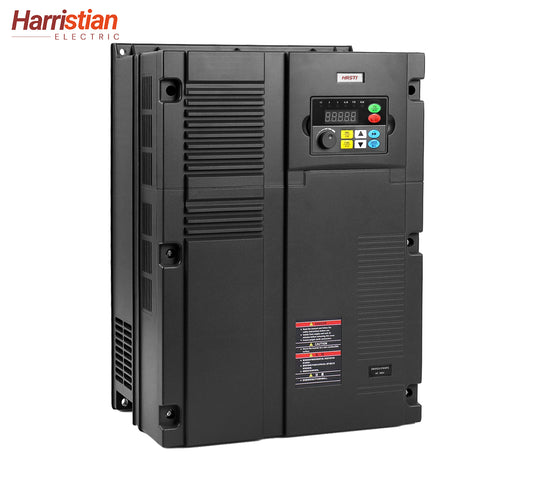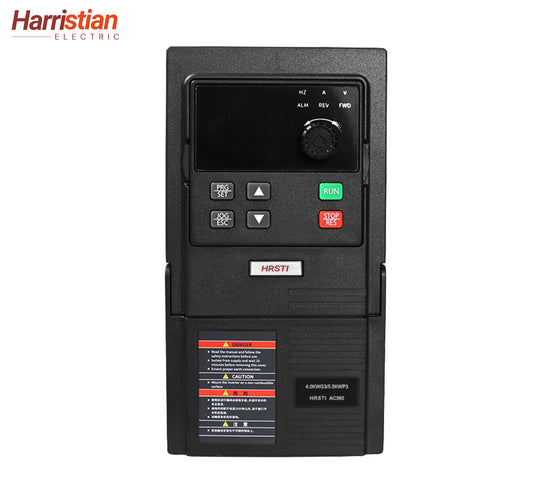Optimizing Air Compressor Performance Using Variable Frequency Drive Technology: A Case-Based Analysis
Compartir
Abstract:
In recent years, energy efficiency has emerged as a critical concern in industrial operations, driven by escalating energy costs and increasingly stringent environmental regulations. As industries strive to optimize energy consumption without compromising performance, attention has turned toward high-energy-consuming equipment—particularly air compressors.Motor-driven systems and compressed air equipment are often primary focuses in industrial energy audits, as they represent a substantial portion of a facility’s total energy consumption. Collectively, these systems account for approximately 45% of global electricity usage. (Rathikrindi et al., 2018). However, traditional air compressors typically operate at a fixed speed, running continuously at full capacity regardless of actual air demand. This operating model leads to considerable energy waste, increased mechanical wear, and unstable pressure control, ultimately reducing overall system efficiency.
This paper explores how the integration of Variable Frequency Drives (VFDs) can significantly enhance the efficiency, reliability, and sustainability of air compressor systems. Through multiple perspectives, including energy savings, operational stability, and maintenance reduction, the paper demonstrates that VFDs provide a practical and cost-effective solution for modern industrial energy management.
Introduction
Energy efficiency has become a top priority in industrial operations due to rising electricity costs and increasing environmental pressures. Among the primary energy-consuming equipment, air compressors play a particularly significant role. Reducing energy consumption in such systems not only contributes to environmental sustainability but also directly reduces operational costs and enhances overall profitability for enterprises.
A Variable Frequency Drive (VFD) is an electronic device designed to control the speed and torque of an AC motor by varying the input frequency and voltage. Taking the HRSTI 720 VFD as an example, such drives dynamically adjust motor speed based on real-time load requirements, thereby significantly improving system efficiency. According to Prajapati, Y.R. (2017), installing a VFD on any suitable system can result in energy savings of approximately 5–15%. In air compressor applications—where load demand typically fluctuates throughout the day—this adaptive capability allows the compressor to align its output with actual air consumption, effectively eliminating the inefficiencies associated with continuous full-capacity operation.
Energy Savings
The most notable benefit of using a VFD in air compressors is energy savings. Unlike fixed-speed compressors that frequently operate at full speed and unload when not required—resulting in significant power waste—VFD-equipped compressors adjust motor speed in response to actual air demand. This load-following capability can reduce energy consumption by 20% to 50%, depending on the specific application and usage pattern (U.S. Department of Energy, 2001; Carbon Trust, 2012). Considering that energy costs can account for up to 70% of a compressor’s total lifecycle cost, the adoption of VFD technology substantially reduces overall operating expenses (CAGI, 2015). The HRSTI series, particularly the 320 and 720 models, are designed to address varying system demands and effectively achieve energy-saving goals across different industrial scenarios.
Improved Pressure Control
Maintaining stable pressure is crucial in many industrial processes. Fixed-speed compressors typically cause pressure fluctuations due to their on-off cycling. In contrast, VFD-driven compressors offer precise pressure control by adjusting motor speed smoothly, maintaining the desired pressure within a narrow band (ASHRAE, 2020). This improves the reliability and quality of end-use equipment, reduces product defects, and minimizes unnecessary air leaks caused by over-pressurization.
Reduced Mechanical Stress and Maintenance
Frequent start-stop cycles in fixed-speed compressors generate high inrush currents and mechanical shocks, which accelerate wear on motor bearings and other moving parts. VFDs allow for soft start and gradual acceleration, reducing electrical and mechanical stress. As a result, the service life of both motors and compressors is extended, and maintenance requirements are reduced. This contributes to lower downtime and further reduces total cost of ownership.
Lower Noise and Heat Emissions
Operating at reduced speeds also leads to quieter operation and less heat generation. This improves workplace comfort and reduces the burden on cooling and ventilation systems. For facilities focused on sustainability and employee wellbeing, these side benefits add to the appeal of VFD-based air compressor systems.
Integration with Smart Control Systems
Modern VFDs support digital communication protocols such as Modbus, Profibus, and Ethernet, allowing seamless integration into intelligent factory systems. Through remote monitoring and real-time control, facility managers can optimize compressor performance, identify anomalies early, and implement energy-saving strategies. This aligns well with Industry 4.0 and smart manufacturing initiatives.
Potential Challenges and Mitigation
Despite their advantages, VFDs do have some limitations. They introduce harmonics into the power system, which may interfere with sensitive electronics or reduce power quality. However, these issues can be effectively mitigated by using filters or harmonic suppressors. Additionally, the initial cost of installing a VFD may be higher than that of a traditional setup, but the return on investment (ROI) is often achieved within one to two years through energy savings alone.
Real-World Applications and Results
In real-world case studies, factories that switched from fixed-speed to VFD-controlled air compressors reported substantial energy savings, improved equipment reliability, and reduced carbon emissions. For instance, feedback from most HRSTI VFD solution implementations indicates that retrofitting air compressor systems with HRSTI series VFDs has achieved up to a 35% reduction in compressor-related electricity consumption, translating into thousands of dollars in annual energy cost savings. These results validate both the economic and environmental benefits of adopting HRSTI VFD technology in air compressor applications
Conclusion
The integration of Variable Frequency Drives in air compressors represents a vital step forward in achieving energy efficiency, cost savings, and operational flexibility. While there are some technical challenges associated with harmonics and upfront investment, the long-term benefits far outweigh these drawbacks. As industries move toward more sustainable and intelligent operations, VFDs offer a proven and practical solution to optimize air compressor performance and contribute to a greener future.
Reference:
Prajapati, Y.R., et al., Performance Analysis, Savings and Modifications in Compressed Air System of Manufacturing Industry. Kalpa Publications in Engineering, 2017. 1: p. 457-463.
Rathikrindi, K.S., S. Paramasivam, and L. Sandeep. Energy saving opportunities through variable frequency drive for commercial air conditioners. in 2018 4th International Conference on Electrical Energy Systems (ICEES). 2018. IEEE.
U.S. Department of Energy, 2001. Compressed Air Tip Sheet #7 – Compressed Air System Controls. [online] Office of Industrial Technologies. Available at: https://www.energy.gov/eere/amo/compressed-air-systems [Accessed 30 May 2025].
Carbon Trust, 2012. Compressed air systems: A guide for energy managers and engineers. [online] London: The Carbon Trust. Available at: https://www.carbontrust.com [Accessed 30 May 2025].
Compressed Air and Gas Institute (CAGI), 2015. Compressor lifecycle cost analysis. [online] Available at: https://www.cagi.org [Accessed 30 May 2025].
ASHRAE, 2020. ASHRAE Handbook – HVAC Systems and Equipment. Atlanta: American Society of Heating, Refrigerating and Air-Conditioning Engineers.











